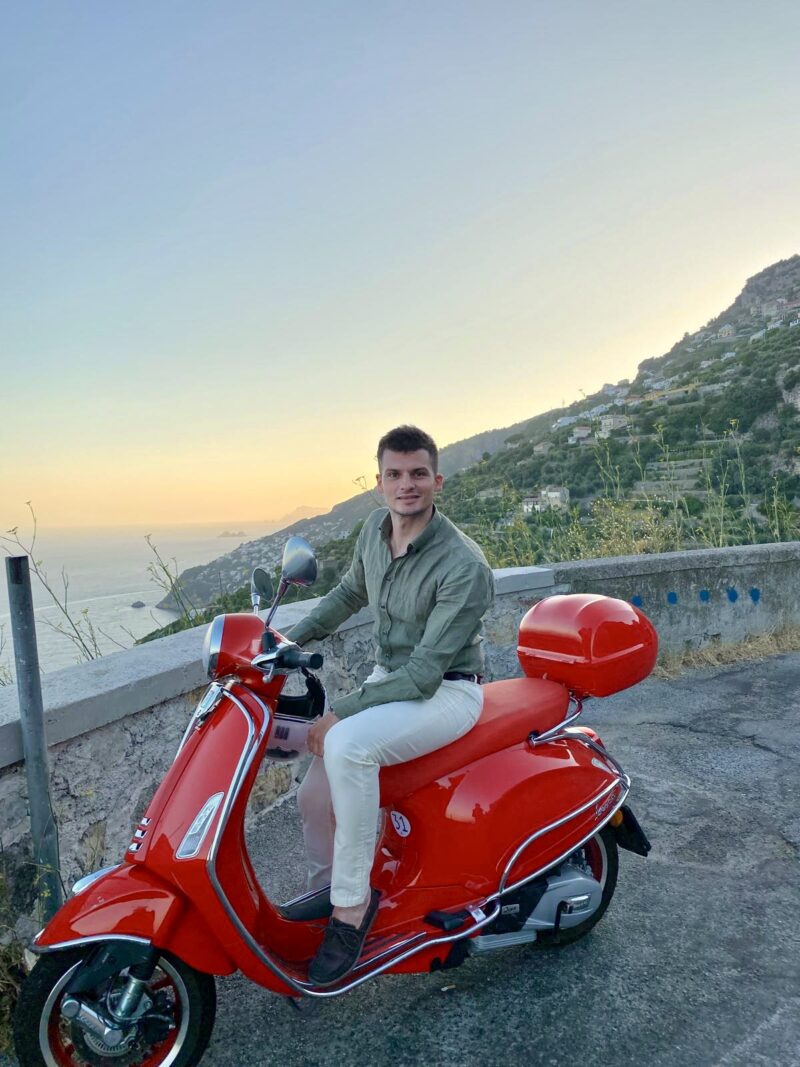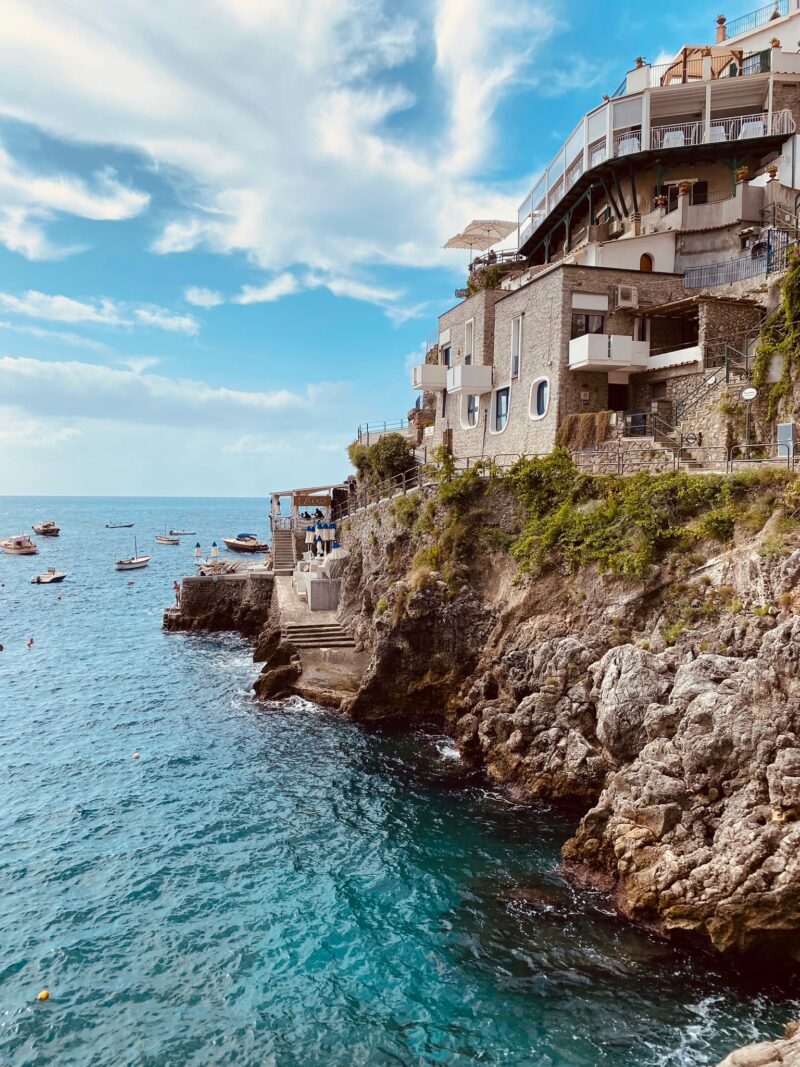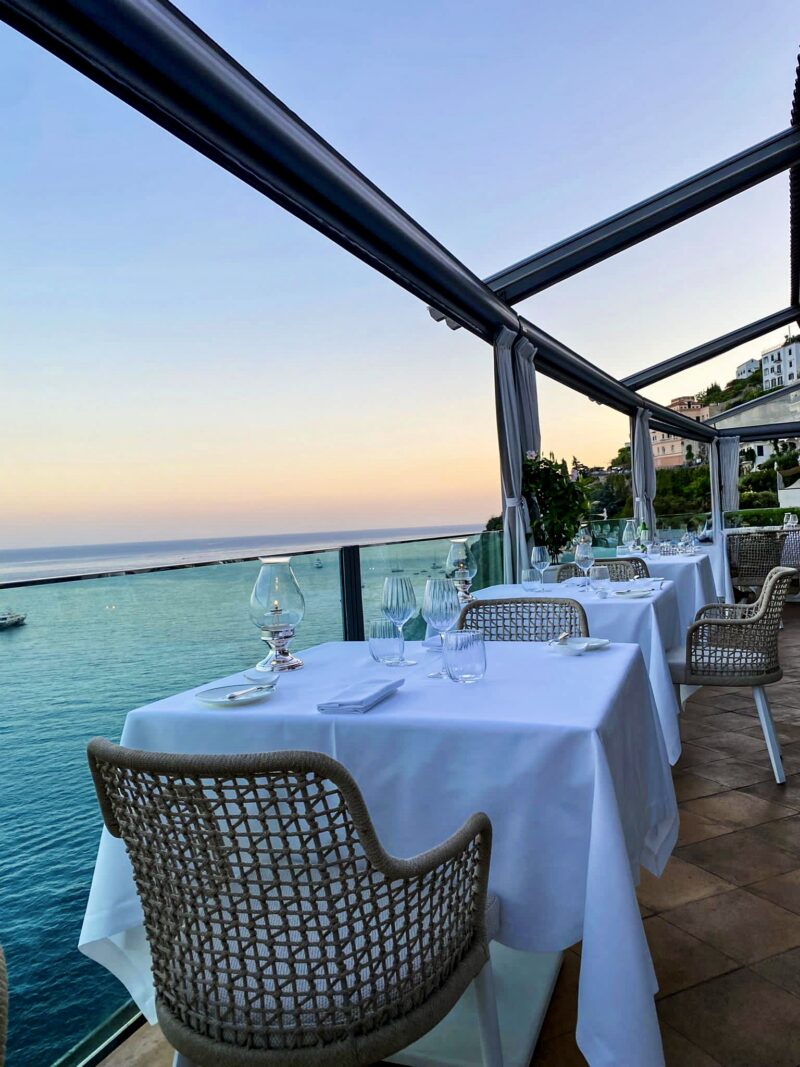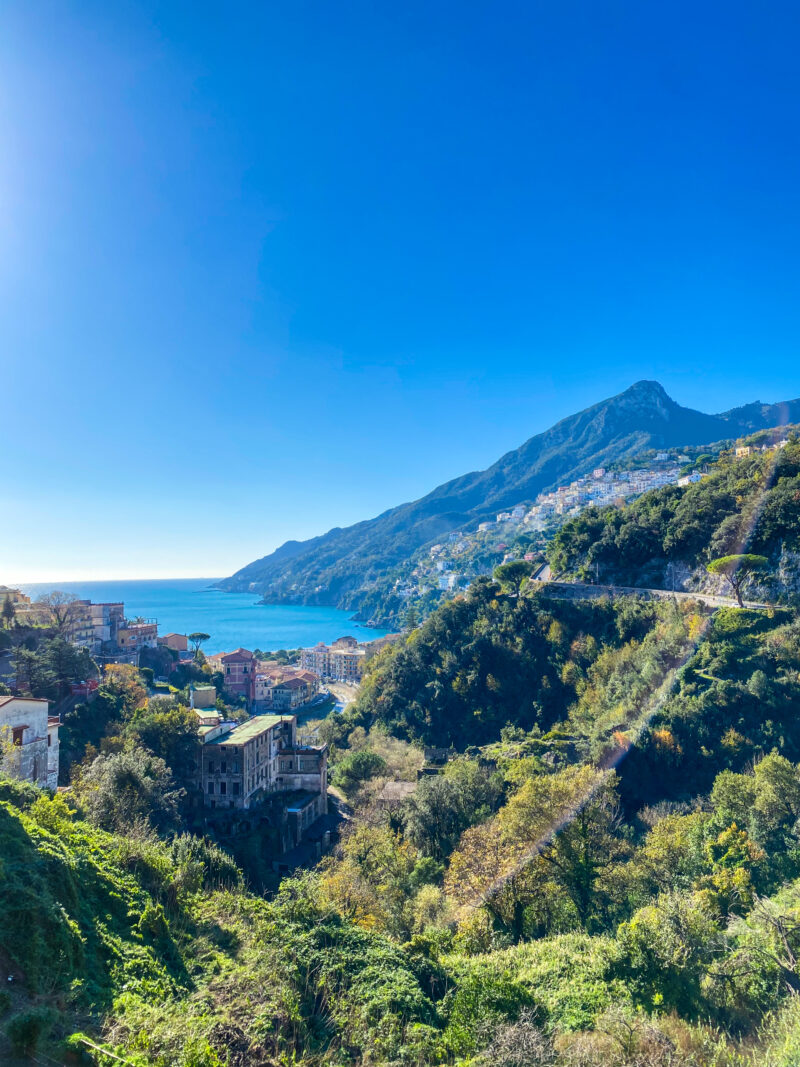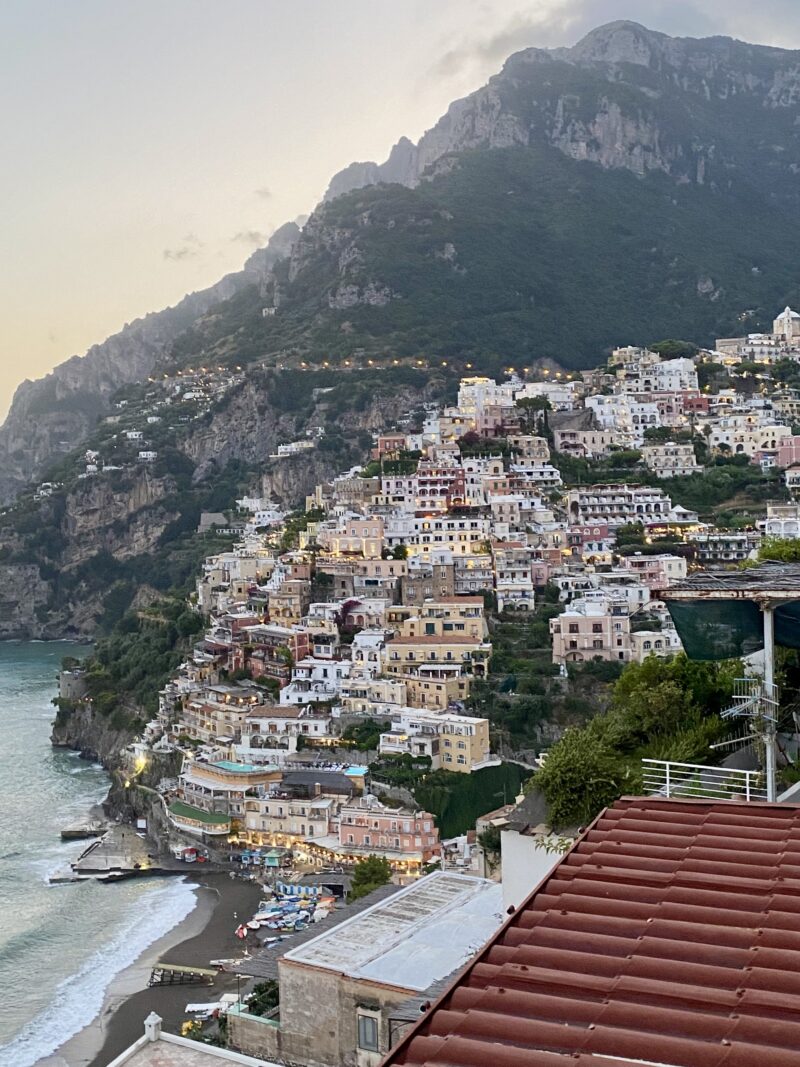The Amalfi Coast is not just a place, it is a state of mind. Returning there, or even just recounting it, means awakening emotions that remain engraved within. I have been there several times, and each experience had a different character: the naive discovery of youth, the conscious maturity of an unforgettable stay, and the sweet nostalgia of a fleeting return.
The first time: the naive discovery
I was younger then, inexperienced in travel. I hadn’t studied enough, nor planned as I should have, and in the end I settled. I stayed in a hotel whose name I can no longer recall, in Maiori, the town with the largest beach of the entire Coast.
I still remember the thrill of arriving in Positano. There, I rented a boat, then spent hours strolling through the town, climbing and descending those famous stairways that link the village from above down to the beach. Lemons everywhere, lush plants everywhere: and that citrus scent that clings to you, released by the very air of the place.
The next day I took the ferry to Capri. I walked across the island, climbing up to Anacapri, and ended the day in the famous Piazzetta. Even though I stayed only briefly, it was enough to breathe, at least for a moment, that sweet and light atmosphere that evoked the Dolce Vita of the 1960s.
The second experience: the stay of maturity
Much more important was my second time on the Coast. Not only because I stayed longer, but because I arrived with a different spirit, with greater personal and financial maturity. This time, I truly wanted to live it.
I stayed at Fico d’India Relais, choosing a sea-view room. The hotel is located in Furore, a strategic position to visit Amalfi. I didn’t take the car: instead, I rented a splendid red Vespa, to savor the air of the Dolce Vita in full 1960s-70s style.
That day was warm, but not too sunny: the perfect condition to visit the center of Amalfi. I stopped in the main square, right in front of the Cathedral, and treated myself to a classic lemon gelato, a symbol of the area. With Sara, my partner, we continued the day with an aperitif in Positano, on the terrace of Hotel Eden Roc. The sunset from there was a vision: the sky slowly igniting, the coast turning gold and pink, and the two of us enjoying that privilege suspended in time.
The following day was dedicated to the sea. Well in advance, I had booked two sunbeds and an umbrella at the famous Il Pirata Beach Club in Praiano. The day was a bit windy, but the absence of sand made everything more pleasant. Lunch, enjoyed at the club’s restaurant, was excellent, accompanied by the view of a sea that seemed endless.
Then there was Atrani, and it was there that the trip took on an intimate and symbolic meaning. Above the bed in our room, Sara and I have a painting that depicts precisely that view: the curve of the road revealing the village, with its small beach. Before leaving I had promised her: “I’ll take you inside the painting.” And so I did. We booked two front-row sunbeds and spent the day living inside that image, transforming a simple day at the beach into an unforgettable memory.
But the pinnacle came the next evening. After a day wandering without purpose, letting ourselves be lulled by the slow rhythm of the flâneurs, it was time for dinner at Donna Emma, the restaurant of Hotel Miramalfi. I will never forget that evening.
The restaurant terrace seems like a balcony suspended over the sea. Sara was seated facing the sea, I to her right: before us Amalfi was preparing for the night. I watched the sun slowly set, fading beyond the horizon, while the town lit up with evening lights. A gentle sea breeze caressed our skin, carrying with it the salty scent of the Coast. A pianist played live, filling the air with elegant, gentle, and sensual notes.
It was a total moment: beauty, intimacy, harmony. The food was perfect, but by then it was almost a detail. All that mattered was that instant, unrepeatable, etched in memory.
The next day I returned home. But I knew that experience would never fade within me.
The fleeting return: nostalgia
I returned the following year, only for a morning. I was in Salerno to visit the famous Christmas Lights, but I couldn’t resist: if I was that close, the Coast was calling. With Sara, we pushed on to Vietri sul Mare.
I strolled between the town’s villa and the center, breathing in the poetry of the colorful ceramics that make this village unique. We had lunch in the center, avoiding the sea since it was December. Then, as always, the time came to leave. But even that small fragment was enough to rekindle the bond with a place that never ceases to be missed.
Conclusion
The Amalfi Coast is this: a succession of emotions, of returns and nostalgia. It is a place that can never be fully experienced all at once, but that forces you to return, to take it back piece by piece. It is both poetry and reality, dream and concreteness.
And I already know that it will never be the last time.


